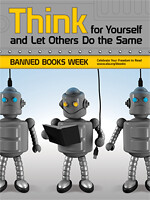James Lee Burke
Simon & Schuster
ISBN13: 978-1-4165-4848-5
ISBN10: 1-4165-4848-3
The violence, invasion, violation, rage and official indifference that make up the life of Burke's character Dave Robicheaux will pick the scabs off old wounds on a reader who has experienced a crime for himself. This latest novel is set in the immediate aftermath of hurricane Katrina. "Wise guys", "street pukes," a drug addicted dying priest and a psychopathic killer float in open boats through the streets of New Orleans looking for safety, salvation and blood diamonds. It will give you bad dreams. The good news is that Dave's daughter, Alafair, has begun her first novel. It amazes me that Burke has allowed details of his own life and family to leak into the noxious, poisoned atmosphere of his Dave Robicheaux stories. |









